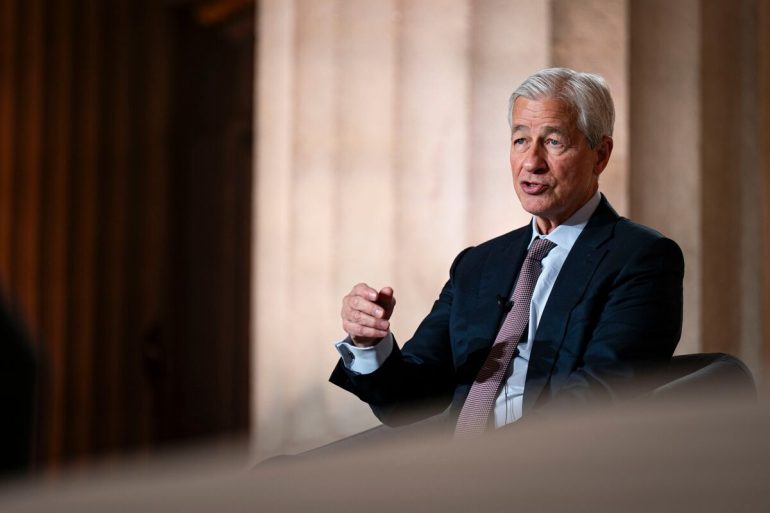The recent bond market sell-off has raised concerns among investors about the safe-haven status of U.S. debt, particularly in light of fears over a potential credit crunch, which could cause liquidity to dry up and economic activity to halt. JPMorgan Chase CEO Jamie Dimon emphasized that major financial institutions can help stabilize the market, but only if regulations implemented to prevent another Global Financial Crisis (GFC) are loosened.
Dimon advocates for significant reforms to capital requirements, which he believes are currently too stringent and hinder consumer lending. He argues that these changes are necessary not just for the banks, but for the overall stability of the markets.
Dimon Critiques Capital Requirements, Highlighting Their Impact on Banks During Market Stress
Capital requirements are designed to ensure that banks, especially those deemed “too big to fail,” can survive significant losses. Dimon pointed out that JPMorgan was one of the few major lenders to avoid a government bailout during the 2008 financial crisis, although it accepted aid under pressure from the U.S. Treasury.

Despite this, Dimon believes that the current regulatory framework needs substantial revision to alleviate pressure on banks. He contends that these regulations, which were intended to prevent another crisis, have deep flaws that prevent banks from adequately supporting the economy in times of market stress.
The Treasury market is integral to the global economy, and Wall Street is closely watching for signs that the Federal Reserve may need to intervene. The ongoing volatility in bond yields, particularly the spike in the 10-year Treasury yield, reflects growing skepticism about U.S. debt.
Dimon noted that, despite typical expectations that long-term interest rates would decrease during stock market declines, the current trend is the opposite, suggesting a misalignment in market dynamics. This unusual behavior raises concerns about the stability of the Treasury market, especially as investors question the safety of U.S. debt, which had been considered one of the world’s safest assets.
Regulatory Constraints on Banks’ Ability to Stabilize Treasury Market and Proposed Reforms
A key factor preventing banks and broker-dealers from stepping in to stabilize the Treasury market is the supplementary leverage ratio, which limits the amount of borrowed funds they can use to make investments. According to economist Torsten Sløk, these regulations, which were tightened after the 2008 financial crisis, have reduced the ability of major financial institutions to act as shock absorbers in the current environment.
As a result, banks are less able to support the market during periods of extreme volatility, exacerbating the challenges in the Treasury market and increasing the risk of a credit crunch.
Dimon and others, including Treasury Secretary Scott Bessent and Federal Reserve Chair Jerome Powell, have suggested that some changes to capital requirements could allow banks to hold more Treasuries during times of market stress. During the COVID-19 pandemic, the Fed temporarily exempted Treasuries and bank reserves from the supplementary leverage ratio, allowing banks to acquire more U.S. debt.
Dimon is hopeful that under the current administration, which has already scaled back tariffs, there is an opportunity for similar reforms that would unlock significant lending capacity for banks. He believes that addressing these regulatory flaws could free up “hundreds of billions of dollars” and ultimately stabilize the markets.

